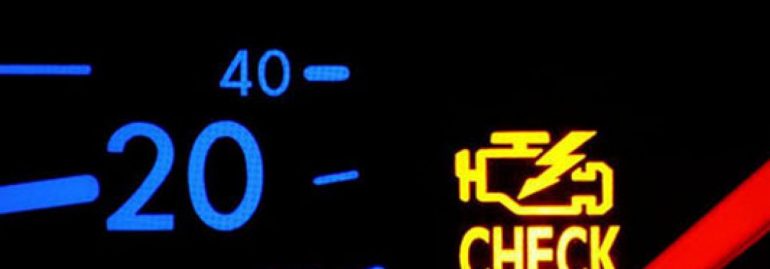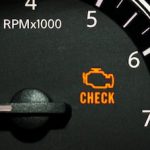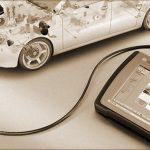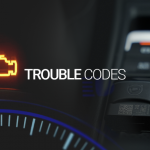
If you want to know what your car’s engine fault code is, read this article. In it, we’ll discuss the most common codes, including P0173, P0335, P0420, and P2138. You can also check your car’s manual to find out what the actual reason is for any particular code. And don’t worry if you don’t recognize a code right away, there’s no need to panic! The good news is that this article will walk you through the process step by step.
P0173
The code P0173 can be a very serious problem because it can damage your catalytic converter and engine. This code is rarely found without other codes related to the fuel system, which is why it is vital to repair all related codes before starting with the P0173 code. To diagnose this code, you should have a good repair manual and a good digital multimeter. You should also have a fuel pressure gauge dedicated to the car’s system. You should also be able to run the vehicle to test the fuel pressure gauge and make sure that everything is working properly.
The engine control module (PCM) triggers the P0173 error code when it experiences a problem adjusting the air to fuel ratio. This can happen if the fuel trim is overcompensated or under-compensated. The PCM will send this code when the mass airflow sensor (MAF) does not report fuel pressure at the appropriate level. In these cases, the PCM will try to adjust the fuel trim further until it finds the correct value, but it cannot.
The P0173 code will appear when the fuel trims reach a rich limit, so your car’s PCM may set this error code if it’s malfunctioning. The code may also refer to the bank two of fuel trims. Some symptoms of P0170 include MIL illumination, unmetered air leak, fuel saturated engine oil, misfire, hesitation or stalling at idle. A few other possible causes include an unmetered air leak, a vacuum leak, and oil contamination of the MAF and O2 sensor connectors.
If you’re not sure if the code P0173 is the cause of your problem, visit your mechanic immediately. He or she will diagnose the problem. The code is a warning of an issue that needs to be fixed as soon as possible. If you’ve already sorted the problem with the P0173 code, you can get a car that’s running properly. This code can also result in the engine shutting down unexpectedly.
P0335
If you are experiencing sluggish acceleration, stalling, or any other type of problem, then you should check your P0335 engine fault codes list. The problem is most likely related to the crankshaft position sensor. The malfunction may also cause poor spark timing. The symptoms of this engine code vary depending on the model and manufacturer. In some cases, the Check Engine Light will illuminate immediately, while in others, it will only come on after failing a series of PCM tests. Depending on the model and make of your vehicle, these symptoms may occur gradually.
If the problem continues to persist, try replacing one or all of the sensors. If none of these solutions work, consider taking your car to a professional. You can use RepairPal to find a qualified mechanic in your area. Certified shops guarantee their work with a 12-month warranty, and they offer guaranteed fair prices. The repair of a P0335 engine fault code may be necessary to solve the underlying problem.
If you are experiencing any of the symptoms associated with the P0335 engine fault code, contact a professional mechanic or repair shop. Your mechanic can help you find a solution by reading the code. There is a P0335 engine fault codes list available to help you find and diagnose this problem. While you may need to consult a professional for your vehicle, you can learn about the most common repairs. There is a chance that you will need to repair or replace the crankshaft position sensor. The repair process will vary depending on the model of your vehicle.
A common cause of P0335 is the crankshaft position sensor. If it is causing the problem, it will have a resistance reading that is out of specs. This code may be caused by other components, such as the wiring harness or timing belt. When this code is displayed on the diagnostic tool, you must replace the faulty components and recheck your engine’s drivability. Even experienced technicians can make mistakes when diagnosing these codes, so it’s best to consult with a professional before attempting any repairs.
P0420
The first thing to do if your car displays the P0420 engine fault code is to take your car to a mechanic. This code can indicate a number of problems, including problems with upstream or downstream oxygen sensors. It also indicates problems with the catalytic converter, ignition, or fuel system. To determine whether the problem is related to a faulty sensor, you can use a digital multimeter to measure the voltage of the sensor’s output. It is vital to document the results for the mechanic to review. Using the wrong diagnosis could lead to a costly repair.
To fix the problem, the mechanic will need to check the catalytic converter or oxygen sensors. A catalytic converter can be the source of this code, and a mechanic should inspect it. Other common problems are oil contaminating the catalytic converter, oxygen sensor wiring, or an incorrect fuel type. An OBD-II scanner will retrieve trouble codes from the PCM. The mechanic will check the downstream oxygen sensor data and the rear oxygen sensor for excessive wear or damage.
A bad catalytic converter is the most common cause of the P0420 engine fault code. In addition to this, you should check the car’s exhaust system for leaks. It could also be the result of a bad catalytic converter or other engine components. The oxygen sensor and the wiring harness are often faulty, so it is essential to inspect them before contacting the mechanic. If you don’t notice any of these problems, then it’s time to take your car to a mechanic.
While this code is common, it may not necessarily mean a major issue. If it is a problem with your catalytic converter, then you should replace it. You can also use a diagnostic tool to troubleshoot the P0420 code if you’re unsure of what’s wrong. The diagnostic tool you buy will help you get to the bottom of the problem and fix it before it escalates.
P2138
The P2138 code, a general powertrain code, affects vehicles made after 1996. It describes a problem related to the throttle body opening. The specific problem is not always the same, but the symptoms are the same across all models. Manufacturers may refer to this code in different ways, so it’s essential to know what to look for. To find out what’s causing your vehicle’s P2138 engine fault code, read the list below.
If your car is running poorly, this code may indicate a problem with the wiring harness or connectors. The connector pins are either corroded or pushed out. Repairing this code could take an hour, and the cost will depend on the engine type and location. Most auto repair shops charge between $75 and $150 per hour. To determine what the problem is, follow the steps outlined in the manufacturer’s service manual.
The P2138 code may also indicate a problem with the throttle position sensor. The throttle position sensor monitors the engine’s throttle pedal position, so a malfunction in this sensor could cause the P2138 engine fault code to be set. In this case, the solution to the problem may be to replace the throttle position sensor. You can purchase a replacement throttle position sensor from PartsAvatar Canada for a reasonable price.
APP sensors are another cause of this code. These sensors send data to the engine control module (PCM) through wires. When APP sensors malfunction, the vehicle may get the P2138 engine fault code. To replace the accelerator pedal position sensor, you can visit partsavatar. The site offers a wide selection of APP sensors, and it offers free shipping if you order over 99$. This way, you’ll get your car running smoothly again in no time!
P0017
When the P0017 error code appears on your car’s dashboard, you may need to seek immediate assistance from your mechanic. It indicates that a camshaft or crankshaft may have been damaged. The timing belt or chain may also be out of sync. If the timing chain does not follow the right trajectory, pistons and valves could hit each other and damage the engine. You may also experience drivability issues, including rough starting, misfiring, stalling, and poor acceleration.
While P0017 engine fault codes list are fairly generic, the fixes for them vary between different makes and models. A service bulletin issued by GM addresses this particular issue, but other manufacturers may have similar fixes for the same problem. While this fault code is considered moderate, it may affect your engine’s performance and gas mileage. If left untreated, it could lead to a costly repair bill. If left untreated, the problem could lead to more severe damage to your car’s engine, including a blown engine.
Generally, the P0017 error code indicates a problem with the camshaft and crankshaft. These parts work together to produce the engine’s exhaust and intake gases. If there’s an issue with the crankshaft or camshaft, it will cause a malfunction. The symptoms will vary depending on the severity of the problem. In severe cases, the symptoms could include decreased performance and increased fuel consumption. Some cars may even produce misfire noises.
A loose timing chain, a damaged tensioner, and low oil can also cause the P0017 trouble code. It can also indicate that the belt/chain is too stretched. An engine with low oil may have a defective timing chain, which affects the overall engine’s performance and emission levels. In this case, the check engine light will illuminate and store a diagnostic trouble code. To determine the source of the problem, you must have the car’s engine analyzed by a mechanic.






